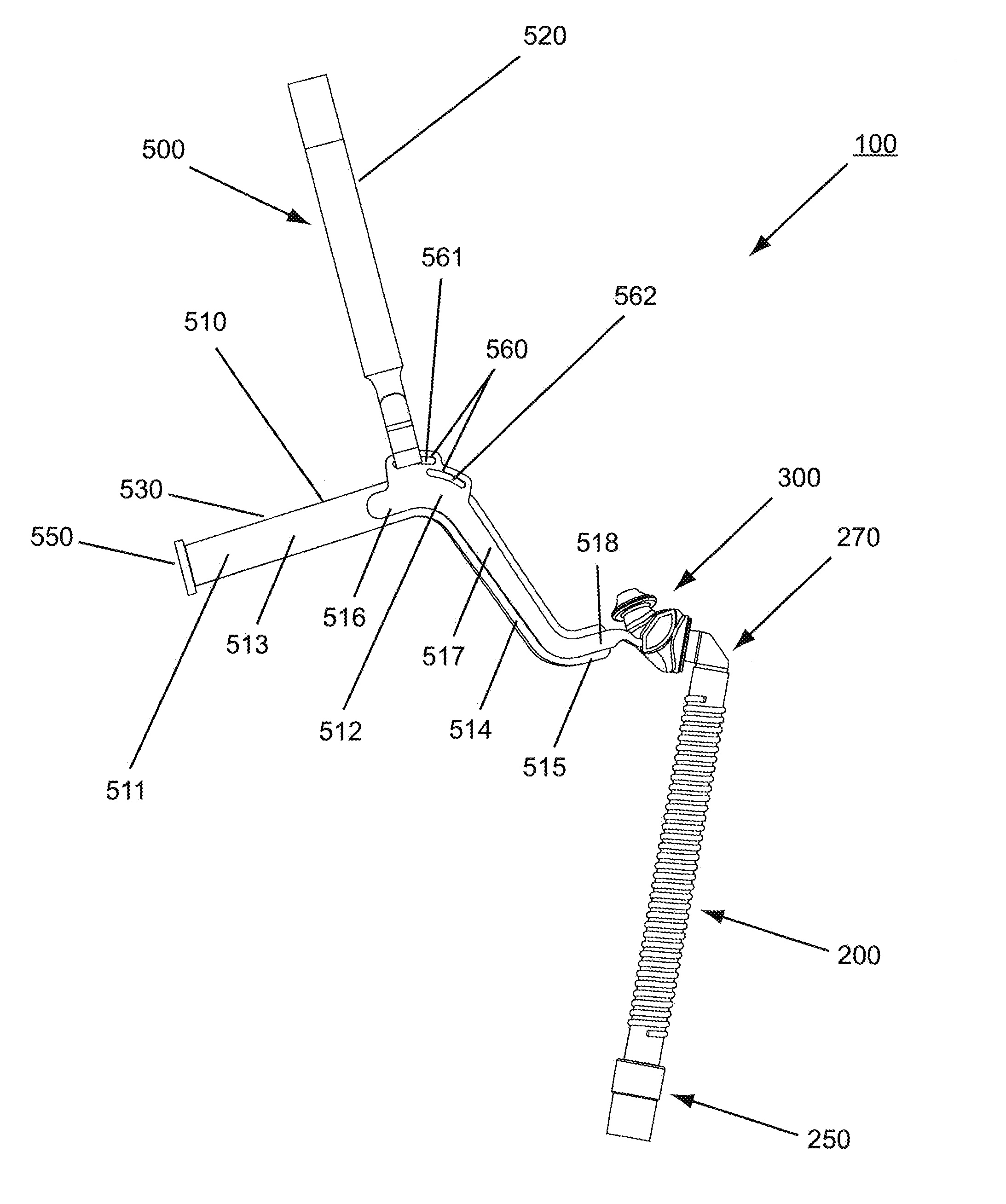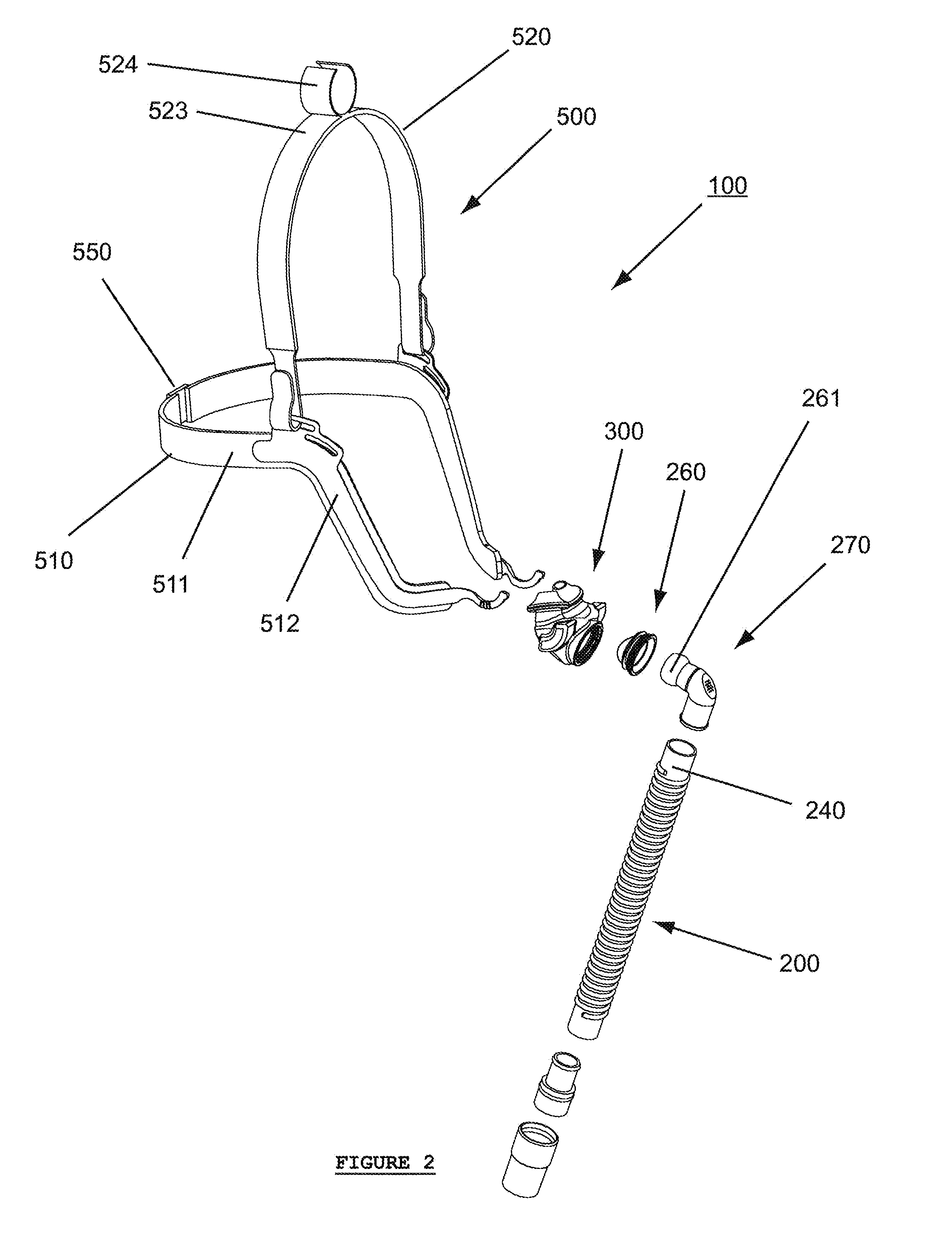Adjustable nasal prong and headgear assembly
a technology of headgear and prongs, which is applied in the field of nasal prongs and headgear assemblies, can solve the problems of inability to provide adequate oxygen to the lungs, limited attention span, poor judgment, etc., and achieve the effect of improving seal and size and dimension
- Summary
- Abstract
- Description
- Claims
- Application Information
AI Technical Summary
Benefits of technology
Problems solved by technology
Method used
Image
Examples
Embodiment Construction
[0051]The present invention will now be described more fully hereinafter with reference to the accompanying drawings, in which preferred embodiments of the invention are shown. This invention may, however, be embodied in many different forms and should not be construed as limited to the embodiments set forth herein. Rather, these embodiments are provided so that this disclosure will be thorough and complete, and will fully convey the scope of the invention to those skilled in the art. Like numbers refer to like elements throughout. The terms “embodiment of the invention,”“embodiments”, or “invention” do not require that all embodiments of the invention include the discussed feature, advantage, or mode of operation.
[0052]The invention described in detail below and in the figures is designed to cooperate and be used with any form of ventilation interface for the administration of breathable gas having a headgear and some form of facial seal. Such ventilation interfaces can include any...
PUM
 Login to View More
Login to View More Abstract
Description
Claims
Application Information
 Login to View More
Login to View More - R&D Engineer
- R&D Manager
- IP Professional
- Industry Leading Data Capabilities
- Powerful AI technology
- Patent DNA Extraction
Browse by: Latest US Patents, China's latest patents, Technical Efficacy Thesaurus, Application Domain, Technology Topic, Popular Technical Reports.
© 2024 PatSnap. All rights reserved.Legal|Privacy policy|Modern Slavery Act Transparency Statement|Sitemap|About US| Contact US: help@patsnap.com










